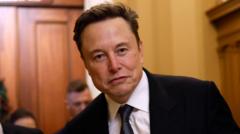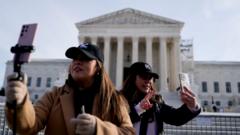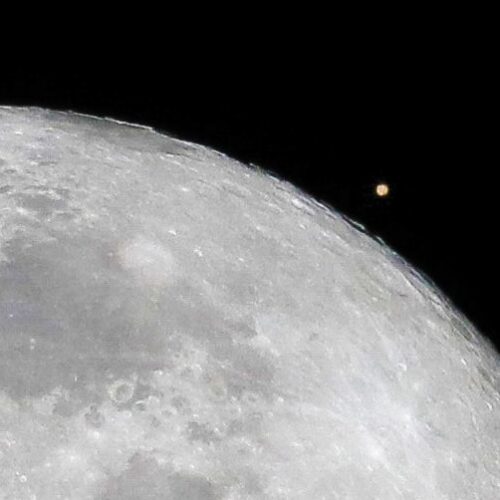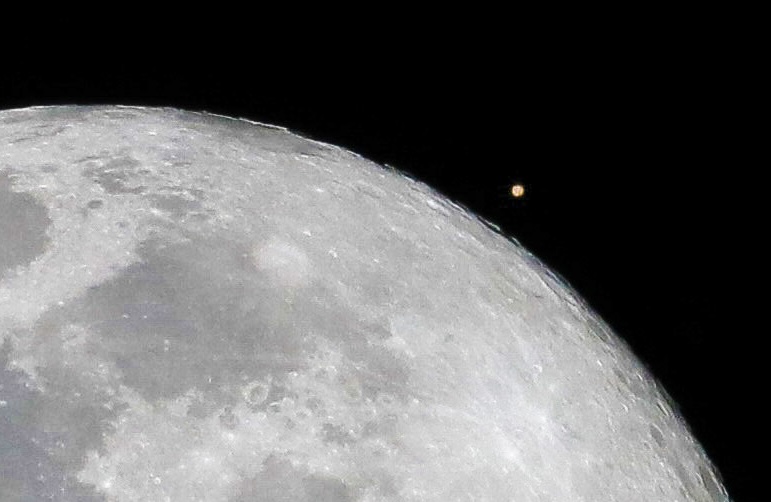Google app showing new bottom toolbar for Search, Discover pages

The Google app on Android has long made use of a Chrome Custom Tab and there’s now a new toolbar when opening Search results and Discover articles.
more…
The Google app on Android has long made use of a Chrome Custom Tab and there’s now a new toolbar when opening Search results and Discover articles.
more…Nvidia has been doubling down on the opportunity to build robotics and other industrial AI applications, with the launch of its Omniverse platform, and most recently Mega, an Omniverse Blueprint framework to create digital twins to operate these applications. It’s also investing in digital twin startups to get the effort off the ground. Taiwan’s MetAI […]
© 2024 TechCrunch. All rights reserved. For personal use only.

Elon Musk’s acquisition of Twitter has resulted in a federal lawsuit by the Securities and Exchange Commission alleging that he broke securities laws with a late disclosure, and saved $150 million in the process.
Before Musk agreed to buy Twitter for $44 billion, before he tried to back out of that deal, before he was forced to go through with it, and before he changed its name to X, he started by acquiring a substantial stake in the company but didn’t reveal that fact until weeks later.
The only problem, as the SEC pointed out then, is that by the time he disclosed that stake, it was outside the agency’s required 10-day window. They claim that he should’ve filed his paperwork by March 24th, 2022, instead of when he actually did, on April 4th (and then again on April 5th). During that period, they say he purchased more than $500 million in shares of the company.
However, with only a few days left before the Trump administration takes over and installs a new head of the SEC (along with Elon Musk reportedly snagging an office in the White House complex), it’s unclear how far the lawsuit will go.
The SEC claims Musk cost investors at least $150 million due to the late disclosure and that he harmed any investors who sold stock between March 25th, 2022, and April 1st, 2022. Its lawsuit is seeking the money Elon made as a result of holding off on the disclosure, as well as a civil penalty and other punishments.

For over a decade, you couldn’t easily fly a DJI drone over restricted areas in the United States. DJI’s software would automatically stop you from flying over runways, power plants, public emergencies like wildfires, and the White House.
But confusingly, amidst the greatest US outpouring of drone distrust in years, and an incident of a DJI drone operator hindering LA wildfire fighting efforts, DJI is getting rid of its strong geofence. DJI will no longer enforce “No-Fly Zones,” instead only offering a dismissible warning — meaning only common sense, empathy, and the fear of getting caught by authorities will prevent people from flying where they shouldn’t.
In a blog post, DJI characterizes this as “placing control back in the hands of the drone operators.” DJI suggests that technologies like Remote ID, which publicly broadcasts the location of a drone and their operator during flight, are “providing authorities with the tools needed to enforce existing rules,” DJI global policy head Adam Welsh tells The Verge.
But it turns out the DJI drone that damaged a Super Scooper airplane fighting the Los Angeles wildfires was a sub-250-gram model that may not require Remote ID to operate, and the FBI expects it will have to “work backwards through investigative means” to figure out who flew it there.
DJI voluntarily created its geofencing feature, so it makes a certain degree of sense that the company would get rid of it now that the US government no longer seems to appreciate its help, is blocking some of its drone imports, calls DJI a “Chinese Military Company,” and has started the countdown clock on a de facto import ban.
“The FAA does not require geofencing from drone manufacturers,” FAA spokesperson Ian Gregor confirms to The Verge.
But former DJI head of global policy, Brendan Schulman, doesn’t seem to think this is a move for the better. Here are a few choice phrases he’s posted to X:
This is a remarkable shift in drone safety strategy with a potentially enormous impact, especially among drone pilots who are less aware of airspace restrictions and high-risk areas.
There was substantial evidence over the years that automatic drone geofencing, implemented using a risk-based approach, contributed significantly to aviation safety.
Interesting timing: Ten years almost to the day after a DJI drone infamously crash-lands on the White House lawn, DJI has removed the built-in geofencing feature that automatically impedes such an incident, replacing it with warnings that the user can choose to ignore.
Here are the questions we sent DJI, and the company’s answers:
1) Can you confirm that DJI no longer prevents its drones from taking off / flying into any locations whatsoever in the United States, including but not limited to military installations, over public emergency areas like wildfires, and critical government buildings like the White House?
Yes, this GEO update applies to all locations in the U.S and aligns with the FAA’s Remote ID objectives. With this update, prior DJI geofencing datasets have been replaced to display official FAA data. Areas previously defined as Restricted Zones (also known as No-Fly Zones) will be displayed as Enhanced Warning Zones, aligning with the FAA’s designated areas.
2) If it still does prevent drones from taking off / flying into some locations, which locations are those?
Not applicable.
3) Did DJI make this decision in consultation with or by direction of the US government or any specific government bodies, agencies, or representatives? If so, which? If not, why not?
This GEO update aligns with the principle advanced by aviation regulators around the globe — including the FAA — that the operator is responsible for complying with rules.
4) Did DJI run any risk analysis studies beforehand and if so, did it see a likelihood of abuse? What likelihood did it see? If not, why not?
The geofencing system that was in place prior was a voluntary safety measure introduced by DJI over 10 years ago when mass-produced small drones were a new entrant to the airspace, and regulators needed time to establish rules for their safe use.
Since then, the FAA has introduced Remote ID requirements, which means that drones flown in the U.S. must broadcast the equivalent of a “license plate” for drones. This requirement went into effect in early 2024, providing authorities with the tools needed to enforce existing rules.
“This update has been in development for some time, following similar changes successfully implemented in the E.U. last year, which showed no evidence of increased risk,” says Welsh. However, last year’s changes reportedly kept mandatory no-fly zones around UK airports.
Here in the United States, Welsh seems to suggest its apps won’t go that far. “To be clear: DJI flight apps will continue to voluntarily generate warnings if pilots attempt to fly into restricted airspace as designated by the FAA, provided that pilots keep their flight apps up to date,” he tells The Verge.

The popular Opera web browser has just released a major update for its iPhone and iPad app. With the new version, Opera is making it easier for users to interact with Aria – the company’s built-in AI – through new Home Screen widgets. Read on as we detail everything that’s new with the latest Opera update for iOS.
more…After a more than two-year investigation, the Securities and Exchange Commission has sued Elon Musk over his delayed disclosure of the Twitter stock he amassed before announcing his intention to acquire the company in 2022.
In a court filing, the SEC says that Musk filed paperwork with the SEC disclosing his purchase of Twitter shares 11 days after an SEC-mandated deadline to do so. (Federal law, as the SEC notes in its statement, requires investors to publicly report when they have acquired a more than 5 percent stake in a company.) This delay, according to the regulator, allowed Musk to buy up even more Twitter stock at a time when other investors were unaware of his involvement with the company.
From the lawsuit:
During the period that Musk was required to publicly disclose his beneficial ownership but had failed to do so, he spent more than $500 million purchasing additional shares of Twitter common stock. Because Musk failed to timely disclose his beneficial ownership, he was able to make these purchases from the unsuspecting public at artificially low prices, which did not yet reflect the undisclosed material information of Musk’s beneficial ownership of more than five percent of Twitter common stock and investment purpose. In total, Musk underpaid Twitter investors by more than $150 million for his purchases of Twitter common stock during this period. Investors who sold Twitter common stock during this period did so at artificially low prices and thus suffered substantial economic harm.
The regulator has been investigating Musk for years, and has long been at odds with the owner of X. At one point, the SEC accused Musk of attempting to stall and use “gamesmanship” to delay its investigation into his investment in Twitter. Last month, Musk shared a copy of a letter addressed to SEC Chair Gary Gensler in which Musk’s lawyer, Alex Spiro, accused the regulator of “six years of harassment” targeting Musk. The letter indicated that Musk refused a settlement offer from the SEC related to its Twitter investigation.
Musk also faced a class action lawsuit from other Twitter investors and an FTC probe related to the delayed disclosure. However, as The New York Times notes, it’s unclear if the SEC’s latest action will amount to much, as Gensler is expected to step down following the inauguration of President Donald Trump.
X didn’t immediately respond to a request for comment. In a statement to The Times, Spiro called the SEC’s action a “a single-count ticky-tack complaint," calling it “an admission by the S.E.C. that they cannot bring an actual case."
This article originally appeared on Engadget at https://www.engadget.com/big-tech/sec-lawsuit-claims-musk-gained-over-150-million-by-delaying-twitter-stake-disclosure-002627091.html?src=rss©
© Anna Moneymaker via Getty Images




Chinese officials are reportedly exploring a backup plan for TikTok after the Supreme Court appeared unlikely to save it from a US ban. With TikTok’s legal options nearly exhausted, multiple news outlets are reporting that China is considering an option it previously said it wouldn’t: letting ByteDance sell the app.
The kicker? China is reportedly mulling having President-elect Donald Trump’s favorite tech billionaire, Elon Musk, act either as broker or buyer in the arrangement. Reports from the Financial Times, Wall Street Journal and Bloomberg — all citing unnamed sources — indicate that Chinese officials are at least discussing the option of a sale. TikTok spokesperson Michael Hughes has called the reports “pure fiction.” The Chinese embassy in the US and Musk’s existing social media company, X, did not respond to requests for comment.
Plenty of people have expressed interest in buying TikTok at this point, from ”Shark Tank” celebrity Kevin O’Leary to YouTuber Mr. Beast. The problem has not been a lack of buyers — though obvious ones like Meta and Google would likely be barred by antirust authorities — but reluctant sellers. The new reporting suggests that the Chinese...

Accel has backed Indian startup Sarla Aviation for its aim to develop flying taxis for mass mobility in the country.
© 2024 TechCrunch. All rights reserved. For personal use only.

I almost missed it. Amid a bout of prime-time doomscrolling, a social media post reminded me there was something worth seeing in the sky. Mars disappeared behind the full Moon for a little more than an hour Monday night, an event visible across most of North America and parts of Africa.
So I grabbed my camera, ran outside, and looked up just as Mars was supposed to emerge from the Moon's curved horizon. Seen with the naked eye, the Moon's brightness far outshined Mars, casting soft shadows on a cold winter evening in East Texas.
Viewing the Moon through binoculars, the red planet appeared just above several large partially shadowed craters at the edge of the Moon's curved limb. I quickly snapped dozens of photos with my handheld Canon 80D fitted with a 600 mm lens. Within a few minutes, Mars rose farther above the Moon's horizon. Thanks to the parallax effect, the Moon's relative motion in its orbit around Earth appears significantly faster than the movement of Mars in its orbit around the Sun.


© Stephen Clark/Ars Technica
Will Elon Musk post more than 400 tweets this week? With Polymarket, this to be one of the silliest ways people spend their money on the internet.
© 2024 TechCrunch. All rights reserved. For personal use only.

Instead of wallowing in misery about potentially losing access to their favorite short-form video app, many TikTokers are flocking to RedNote, a Chinese social media platform also called Xiaohongshu. I’ve decided to spend some time on the platform myself, and it looks like so-called “TikTok refugees” are excited about interacting with a community mainly comprised of Chinese-speaking users — and vice versa.
Launched in 2013 as a shopping platform, RedNote has grown into one of China’s most popular social apps featuring photos, videos, and written content. Now it’s seeing another spike in users from another part of the globe, with more than 700,000 users joining RedNote in just two days, according to a report from Reuters. The number is still small, at just a fraction of the 150 million Americans TikTok reported were already using the app in early 2023.
As noted by CNN, the name Xiaohongshu translates to “little red book,” which “could be seen as a tongue-in-cheek reference to a red-covered book of quotations from the founding father of Communist China, Mao Zedong.” Many US users seem to be using the Chinese platform out of spite of the US government’s plan to ban TikTok — but in a deeply unserious way.
/cdn.vox-cdn.com/uploads/chorus_asset/file/25831677/rednote_vids.jpg) Screenshot: The Verge
Screenshot: The Verge
Amongst all the Chinese-language posts depicting sleek fit checks, mouthwatering food videos, and memes I don’t quite understand yet, is content from TikTok expats. Many joke about their sudden appearance on the app, with one user wondering what Chinese users might think after seeing an influx of US-based users and another showing their gradual transformation from a gun-wielding, Buc-ee’s merch-wearing American into a Chinese-speaking RedNote user. Others are simply saying “hello” to their new community — some of whom have written captions in what I’d assume is machine-translated Chinese.
Even more interesting though, are all the RedNote users welcoming TikTokers with open arms. Several RedNote users are eager to introduce the app while also sharing some tips and tricks on how to navigate it. One creator says, “now’s the perfect time to dive into Chinese culture” through RedNote with the Chinese New Year coming up, adding that users on the platform are “obsessed with Luigi, Trump, and Squid Game.” Some even offer to teach their new community members Chinese.
But many TikTokers are equally curious about RedNote users in China, too. “Chinese friends, post pictures of your meal or snacks for today! Curious to see what you typically eat,” one user writes. Another asks, “I’m American. Do y’all like us? We know y’all not the enemy. Can we all be friends?”
The trend is actually kind of wholesome, and I’m here for it, but I’m not confident it will actually last. If these apps grow in popularity, they could potentially face a ban, too. But the migration to RedNote is likely just a trend — and trends only last as long as it takes for another to replace it.

Some YouTubers say Honey’s practices are stealing money from them.
PayPal’s Honey browser extension has been lauded for years as an easy way to find coupons online. But some are calling it a “scam” after a deep dive from YouTuber MegaLag, who accused Honey of “stealing money from influencers.”
The video shines a light on Honey’s use of last-click attribution, an approach to online shopping referrals that gives credit for a sale to the owner of the last affiliate cookie in line before checkout. As MegaLag’s video tells it, Honey takes that credit by swapping its tracking cookie in for others’ when you interact with it.
The company has issued statements saying that it follows “industry rules and practices” like last-click attribution. But creators who may have missed out on money because of it aren’t happy. Some YouTube channels Legal Eagle and GamersNexus are now suing.
Below, you’ll find all our coverage of the controversy.